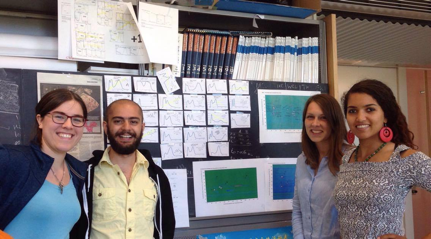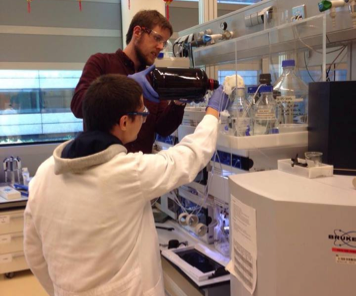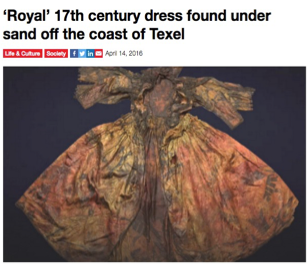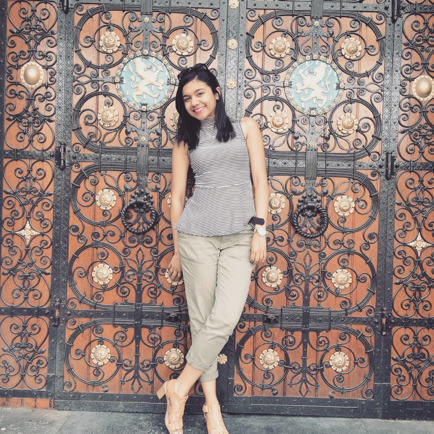 My name is Katherine Ferreras and I am a senior at The City College of New York (CCNY) of The City University of New York, pursuing a Bachelor of Science in Environmental Chemistry, and a minor in Earth and Atmospheric Science. This summer I am in Amsterdam as part of Cultural Heritage Research in the Netherlands, a NSF-funded International Research Experience for US Students (IRES) in the Netherlands. Under the mentorship of Dr. Urs Jans and close collaboration of Dr. Glen Kowach at my home institution, I have been able to explore and expand my interest in groundwater remediation techniques. My work focuses on the development of green rust, a highly reactive iron (II) mineral capable of reducing a range of inorganic and organic species. As this includes toxic materials and organic pollutants, this project can help to provide the necessary knowledge for a new approach to remediate contaminated aquifers. The motivation of my project is to understand the structure, behavior and reductive kinetics of the reaction between green rust and chlorinated hydrocarbons, since this is a possible effective approach to reduce nonpolar chemicals, such as carbon tetrachloride that are found in ponds at the bottom of aquifers.
My name is Katherine Ferreras and I am a senior at The City College of New York (CCNY) of The City University of New York, pursuing a Bachelor of Science in Environmental Chemistry, and a minor in Earth and Atmospheric Science. This summer I am in Amsterdam as part of Cultural Heritage Research in the Netherlands, a NSF-funded International Research Experience for US Students (IRES) in the Netherlands. Under the mentorship of Dr. Urs Jans and close collaboration of Dr. Glen Kowach at my home institution, I have been able to explore and expand my interest in groundwater remediation techniques. My work focuses on the development of green rust, a highly reactive iron (II) mineral capable of reducing a range of inorganic and organic species. As this includes toxic materials and organic pollutants, this project can help to provide the necessary knowledge for a new approach to remediate contaminated aquifers. The motivation of my project is to understand the structure, behavior and reductive kinetics of the reaction between green rust and chlorinated hydrocarbons, since this is a possible effective approach to reduce nonpolar chemicals, such as carbon tetrachloride that are found in ponds at the bottom of aquifers.
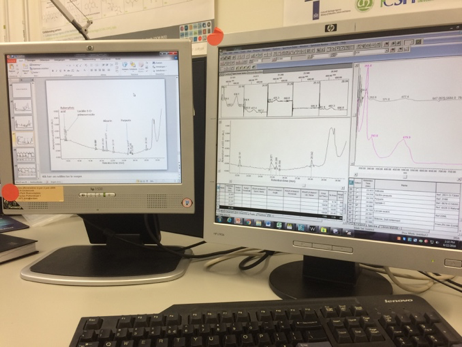
In search of exposure to a different application of chemistry, my mentors encouraged me to apply to this program. I have discovered that cultural heritage science is a multidisciplinary field with unique and interesting challenges. At the Rijksmuseum, under the guidance of Dr. Maarten van Bommel, my project focuses on the development of an ultra high performance liquid chromatography (UHPLC) method for the separation of natural, acid, and basic synthetic dyes. Dyes are present in a range of objects, including textiles, paintings, and wooden objects. Identification of dyes from cultural heritage objects is essential to help conservators create an adequate restoration approach. Currently, dye identification requires several different tests: development of a single chromatographic technique for these early dyes would prevent excessive destructive sampling of these precious cultural objects.

The Netherlands has done a wonderful job of merging university and museum research, so it has been an ideal place to experience a new setting for research outside of strict university settings. This program has given me the opportunity of listening and learning from several talks presented by Ph.D. candidates, scientists, and conservators at such an early stage of my education. Topics as the degradation of ultramarine, the formation of metal-soaps in paints, and the selection of solvents to restore cultural heritage are not longer completely unfamiliar for me. Thanks to the great support and guidance of Dr. Maarten van Bommel I have gotten to clearly understand the science and instrumentation behind UHPLC.
I applied to this program seeking new experiences, not just in the science field but also in a new environment. Being my first experience abroad, I can say that the architecture, the wide selection of art, and the cycling around the city along the canals have made the transition from my comfort zone to an overseas adventure very enjoyable.
